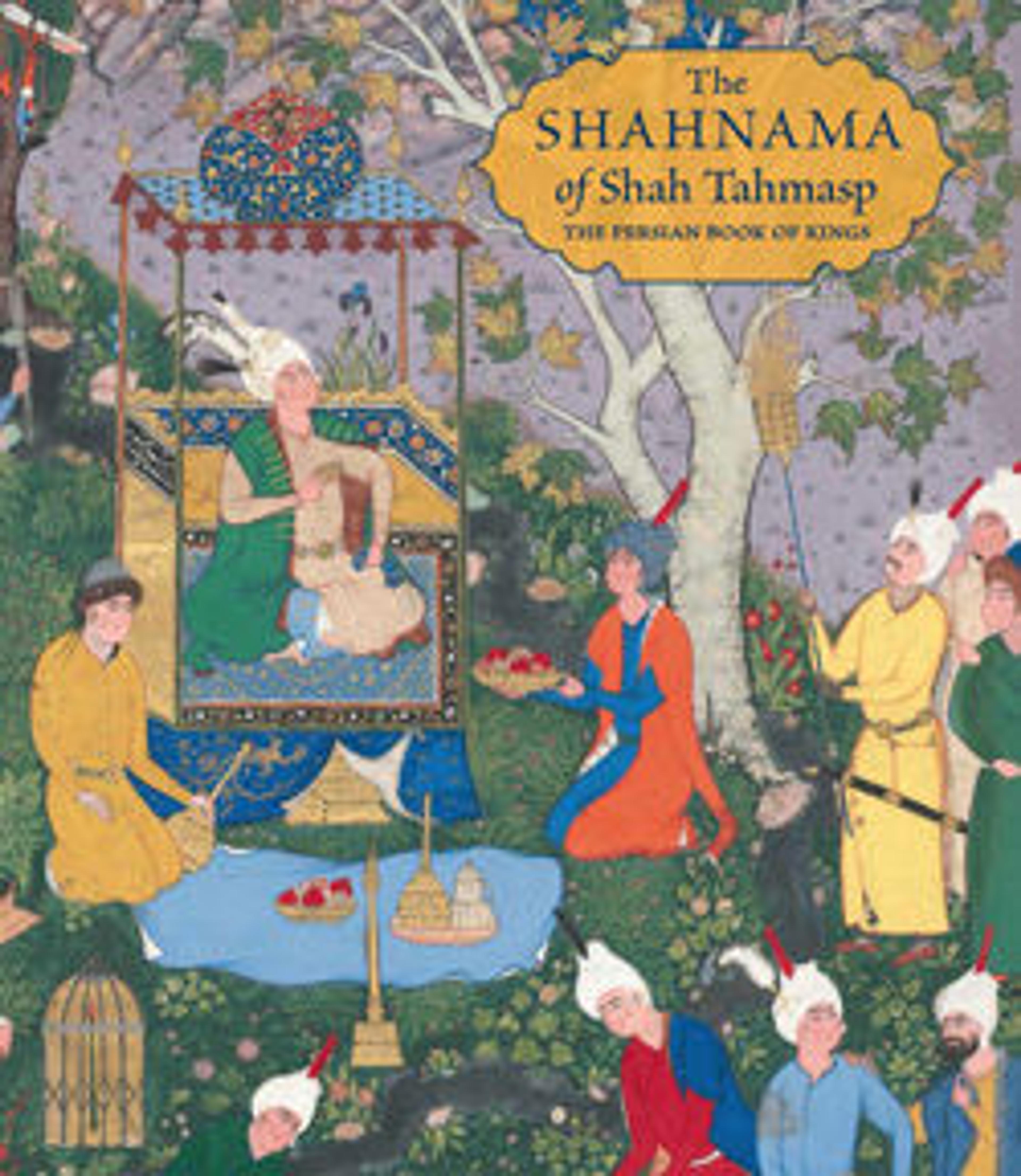"Isfandiyar's Fourth Course: He Slays a Sorceress", Folio 435v from the Shahnama (Book of Kings) of Shah Tahmasp
The hero Isfandiyar performs a series of feats, or "courses," parallel to those of Rustam. In this scene, Isfandiyar has slain a sorceress, who lies bleeding in the foreground next to a mountain stream whose once-silver water has tarnished to black. The squat figures reflect Qasim ibn 'Ali’s grounding in Turkmen painting, while the dramatically piled rocks and clouds are elements that were shared by painters of both Turkmen Tabriz and Timurid Herat background.
Artwork Details
- Title:"Isfandiyar's Fourth Course: He Slays a Sorceress", Folio 435v from the Shahnama (Book of Kings) of Shah Tahmasp
- Author:Abu'l Qasim Firdausi (Iranian, Paj ca. 940/41–1020 Tus)
- Artist:Painting attributed to Qasim ibn 'Ali (Iranian, active ca. 1525–60)
- Workshop director:Aqa Mirak (Iranian, active ca. 1525–1576 Qazvin)
- Date:ca. 1525–30
- Geography:Made in Iran, Tabriz
- Medium:Opaque watercolor, ink, silver, and gold on paper
- Dimensions:Painting:
H. 7 3/16 in. (18.3 cm)
W. 7 1/16 in. (18 cm)
Page:
H. 18 11/16 in. (47.5 cm)
W. 12 5/8 in. (32.1 cm)
Mat:
H. 22 in. (55.9 cm)
W. 16 in. (40.6 cm) - Classification:Codices
- Credit Line:Gift of Arthur A. Houghton Jr., 1970
- Object Number:1970.301.52
- Curatorial Department: Islamic Art
More Artwork
Research Resources
The Met provides unparalleled resources for research and welcomes an international community of students and scholars. The Met's Open Access API is where creators and researchers can connect to the The Met collection. Open Access data and public domain images are available for unrestricted commercial and noncommercial use without permission or fee.
To request images under copyright and other restrictions, please use this Image Request form.
Feedback
We continue to research and examine historical and cultural context for objects in The Met collection. If you have comments or questions about this object record, please contact us using the form below. The Museum looks forward to receiving your comments.
